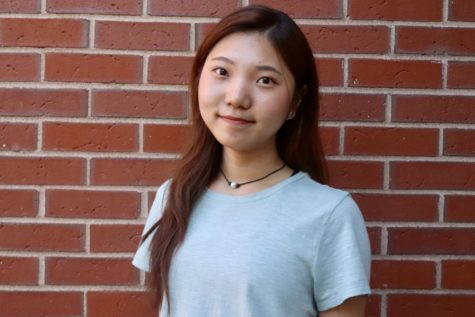Out in Public: A daily custom that became an event
Credit: Katherine Kim
Before the pandemic, visiting public spaces was a daily custom to most people. Nowadays, entry for any public place requires masks and social distancing, which has impacted people’s views of going out in public. “[The pandemic] definitely made me more wary of going out regularly and being around people, especially with all the uncertainty around how exactly the virus can spread,” junior Minnah Gayed said.
October 1, 2020
The COVID-19 pandemic has brought many changes to the factors that shape people’s daily lives when attending public places. Not only has it forced people to limit the use of public spaces, but has also re-shaped the customs and mindsets people used to have when going in public.
Before the pandemic, visiting public spaces was a daily occurrence to most students with school and extracurricular activities. With remote learning progress, new safety measures and restrictions implemented, going out in public became an occasional event for many students.
“I went to public places almost every day, like school and the grocery store before the pandemic,” freshman Ellie Brogan said. “Nowadays, I go to public places only once or twice a week at most.”
Many local public spaces have begun operating under a safety protocol to minimize interactions between the public. Adjustments have been made for shorter operating hours, one point of entry to limit the number of guests, social distancing floor markings and discontinuation of certain services to maintain a safe environment for all.
Although masks and social distancing are required upon entry for any public place, many people have mixed feelings toward public places’ safety.
“I feel safe in public spaces if the people around me are socially distant and are wearing their masks correctly,” Brogan said. “But on the other hand, in some places like the grocery store, it is hard to maintain six feet away at all times when you are in a small space like an aisle. All too often, I have seen people who wear their masks on their chins or off their noses when they go out, and it makes me feel annoyed that they aren’t wearing them correctly.”
Along with practicing safety precautions, many people consider the environment of the public space as a factor of whether it is safe or not. For many, indoor spaces are deemed to have a higher risk of infection than outdoor spaces due to having less ventilation, which can be a huge problem when there is an infected person.
“I think the risk factor varies based on the size of the space, how good the ventilation is and how crowded it is,” junior Minnah Gayed said. “Generally, most public indoor spaces don’t allow for the same kind of social distancing and ventilation as an outdoor space.”
Although the sensitivity when detecting safety might differ from person to person, what holds constant is that the pandemic has changed a lot of people’s views toward public spaces.
“Before COVID, I saw [public spaces] as somewhere you could go about your business and [where] no one would bother you,” Brogan said. “You didn’t have to worry about how the person standing six feet away from you might have the disease. Now, I go into a grocery store and I start to get nervous, unsure if the people that surround me are sick or not.”
As of now, it is difficult to estimate when the pandemic will be over and everything will go back to how it used to be. Therefore, many remember the importance of continuing to follow the safety precautions and be aware of all surroundings.
“The pandemic [made] me take my own precautions if I decided to go outside,” junior Guery Ortega said. “People have to realize [that it is important to take precautions,] otherwise COVID-19 will be remembered only as a troublesome virus. The events that have transpired, the losses and the unpleasant time have to be a wake-up call, not an alarm to snooze.”





![Last Wednesday, the Wayland School Committee gathered to discuss a number of topics regarding the health curriculum and Innovation Career Pathway course. Another large topic of conversation was the ways to potentially mitigate distracting cell phone usage. "These [phones] are going to distract your learning and social relationships," Superintendent David Fleishman said. "That's concrete right there."](https://waylandstudentpress.com/wp-content/uploads/2025/06/Screenshot-2025-06-04-at-9.49.31 PM-1200x886.png)



























![Troy Hoyt finishes the Boston Marathon, running for the Hoyt Foundation. T. Hoyt is the son of Hoyt Foundation CEO Russ Hoyt.
“[Running a marathon] might seem like a big thing, when it’s presented to you at first, but if you break it up and just keep telling yourself, “Yes, you can,” you can start chipping away at it. And before you know it, you’ll be running the whole 26 miles, and you won’t even think twice about it.” T. Hoyt said.](https://waylandstudentpress.com/wp-content/uploads/2025/04/C36E8761-1CBB-452E-9DF2-543EF7B1095E_1_105_c.jpeg)











































![Before the pandemic, visiting public spaces was a daily custom to most people. Nowadays, entry for any public place requires masks and social distancing, which has impacted people's views of going out in public. "[The pandemic] definitely made me more wary of going out regularly and being around people, especially with all the uncertainty around how exactly the virus can spread," junior Minnah Gayed said.](https://waylandstudentpress.com/wp-content/uploads/2020/09/4X7ETb5LthmGV0nRzkzce68YVYuOTzGxetHvJCWE.jpeg)

